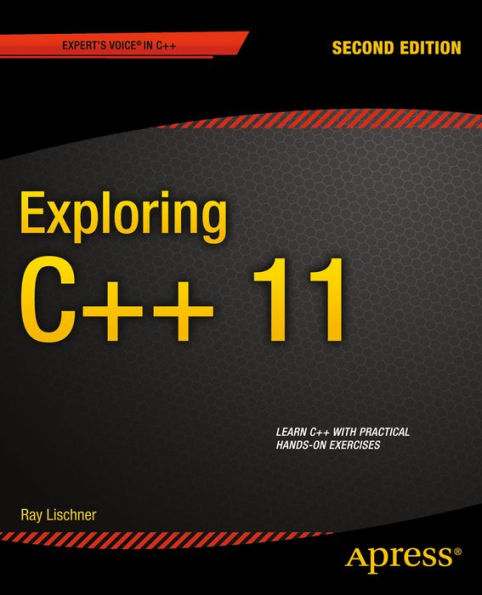Exploring C++ divides C++ up into bite-sized chunks that will help you learn the language one step at a time. Assuming no familiarity with C++, or any other C-based language, you’ll be taught everything you need to know in a logical progression of small lessons that you can work through as quickly or as slowly as you need.
C++ can be a complicated language. Writing even the most straight-forward of programs requires you to understand many disparate aspects of the language and how they interact with one another. C++ doesn't lend itself to neat compartmentalization the way other languages do. Rather than baffle you with complex chapters explaining functions, classes and statements in isolation we’ll focus on teaching you how to achieve results. By learning a little bit of this and a little of that you’ll soon have amassed enough knowledge to be writing non-trivial programs and will have built a solid foundation of experience that puts those previously baffling concepts into context.
In this fully-revised second edition of Exploring C++, you’ll learn how to use the standard library early in the book. Next, you’ll learn to work with operators, objects and data-sources in increasingly realistic situations. Finally, you’ll start putting the pieces together to create sophisticated programs of your own design confident that you’ve built a firm base of experience from which to grow.
Exploring C++ divides C++ up into bite-sized chunks that will help you learn the language one step at a time. Assuming no familiarity with C++, or any other C-based language, you’ll be taught everything you need to know in a logical progression of small lessons that you can work through as quickly or as slowly as you need.
C++ can be a complicated language. Writing even the most straight-forward of programs requires you to understand many disparate aspects of the language and how they interact with one another. C++ doesn't lend itself to neat compartmentalization the way other languages do. Rather than baffle you with complex chapters explaining functions, classes and statements in isolation we’ll focus on teaching you how to achieve results. By learning a little bit of this and a little of that you’ll soon have amassed enough knowledge to be writing non-trivial programs and will have built a solid foundation of experience that puts those previously baffling concepts into context.
In this fully-revised second edition of Exploring C++, you’ll learn how to use the standard library early in the book. Next, you’ll learn to work with operators, objects and data-sources in increasingly realistic situations. Finally, you’ll start putting the pieces together to create sophisticated programs of your own design confident that you’ve built a firm base of experience from which to grow.

Exploring C++ 11
623
Exploring C++ 11
623
